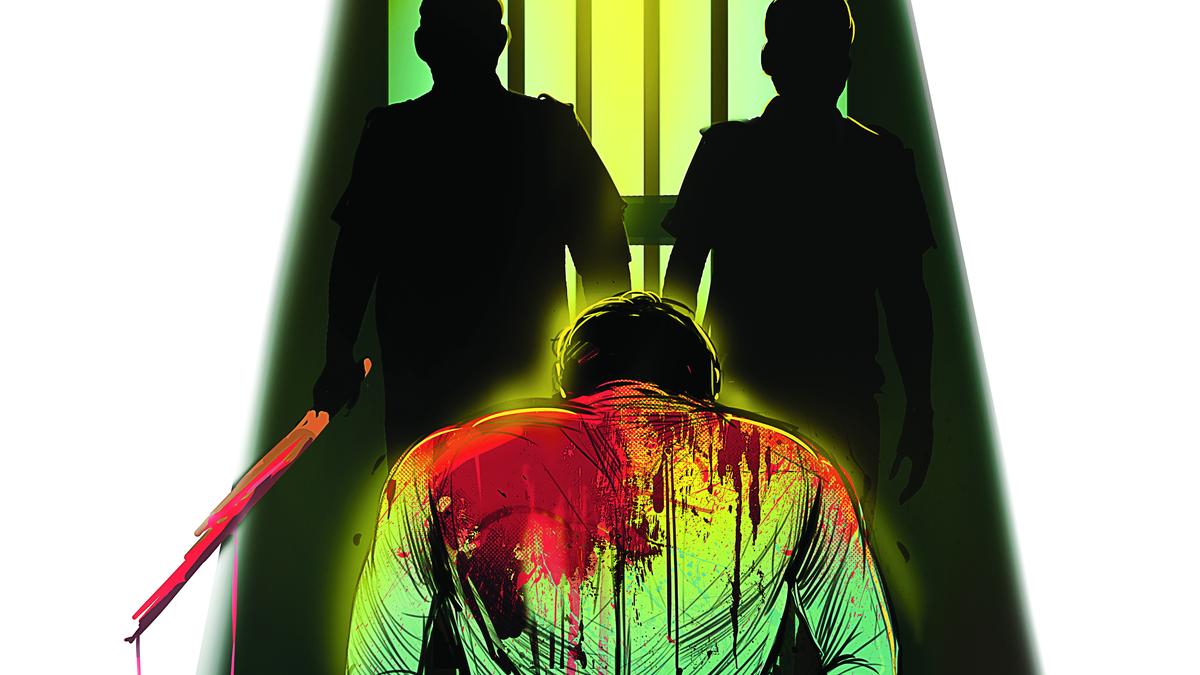
When beetle was placed on scrotum and chillies applied in private parts
The Hindu
Grossly disturbing police torture in 1994 film Kadalan mirrors historical brutality in Madras Presidency.
The police torturing actor Prabhu Deva by tying around his waist a gunny bag filled with giant red ants remains one of the grossly disturbing scenes in Kadalan, the 1994 hit film. However, more than 140 years ago, in the Madras Presidency, similar forms of torture were meted out to people by the police.
Placing itchy insects, like the carpenter beetle, on the navel, scrotum, and other sensitive parts was among the principal tortures in vogue in police cases. Twisting a rope tightly around the entire arm or leg so as to impede circulation; lifting up by the moustache; suspending by the arms that are tied behind one’s back; searing with hot irons; dipping in wells and rivers till the party is half-suffocated; squeezing of testicles; beating with sticks; prevention of sleep; nipping the flesh with pincers; sprinkling pepper or red chillies in the eyes or introducing them into the private parts of men and women were among the other forms of police torture. “...these cruelties occasionally persevered in until death sooner or later ensues,” says the Report of the Commission for the Investigation of Alleged Cases of Torture at Madras, which was submitted to the Governor in Council of Fort St. George in April 1855.
Flogging, too, was a common practice. “Flogging is used in many places; once I have myself heard it from inside my house at Callivoolum, in the talook of Vulleyore, and it was so severe I could hardly take my dinner on account of the sensation it caused me. It is about five years since the fact I relate now took place,” wrote Rev L. Verdier of Tinnevelly (Tirunelveli), as cited in the report.
The Commission noted that it was quite certain that the practice of torture prevailed in a much more aggravated degree in police cases than for realisation of revenue. “The modes resorted to in the former appear to be more acute and cruel, though we doubt if anything like an equal number of persons is annually subjected to violence, on criminal charges, as for default of payment of revenue,” it said.
During the course of the inquiry conducted by the Commission, people also deposed about the different forms of violence that they were subjected to for “revenue and private extortion purposes”. Such tortures included keeping a man in the sun; preventing his going to meals or other calls of nature; confinement; preventing cattle from going to pasture by shutting them up in house; squeezing the crossed fingers with the hands; pinches on the thighs; slaps; blows with fish or whip; running up and down; and twisting the ears. Besides, it was common to make a man sit on the soles of his feet with brickbats behind his knees and “putting a low-caste man on the back”.
“Striking two defaulters’ heads against each other or tying them together by their back hair; placing in the stocks; tying the hair of the head to a donkey’s or buffalo’s tail; placing a necklace of bones, or other degrading or disgusting materials, round the neck” were the other forms of torture that were inflicted on the victims.
The Commission in its report wrote: “That the ‘anundal’ (‘gingeri’ in Telugu), or tying a man down in a bent position by means of his own cloth, or a rope of coir or straw passed over his neck and under his toes, is generally common at the present day, is beyond dispute; and we see no reason to doubt that the kittee (in Telugu ‘cheerata’) is also in frequent use. It is a very simple machine, consisting merely of two sticks tied together at one end, between which the fingers are placed as in a lemon squeezer...”











